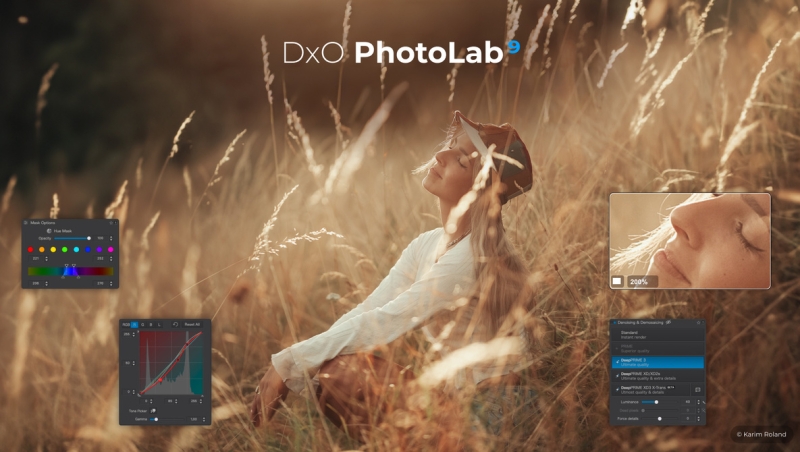Contents
DxO PhotoLab has been the editing choice for many photographers since 2017, specializing in correcting optical defects in camera bodies and lenses. It has a large following, but Adobe, with Photoshop and Lightroom, has always been the 800-pound gorilla commanding much of the market.
DxO keeps improving PhotoLab, and this latest iteration, version 9, will certainly give some Adobe customers reasons to switch—or maybe add it to their software toolset.
The big update this time around is automatic AI masking. In an instant, users can quickly create masks through three different methods: hovering and clicking on different parts of the photo; drawing a box around the area of an image that contains the object to be selected; or choosing from various Subject Types, a list of predefined objects, including sky, people, faces, and hair.
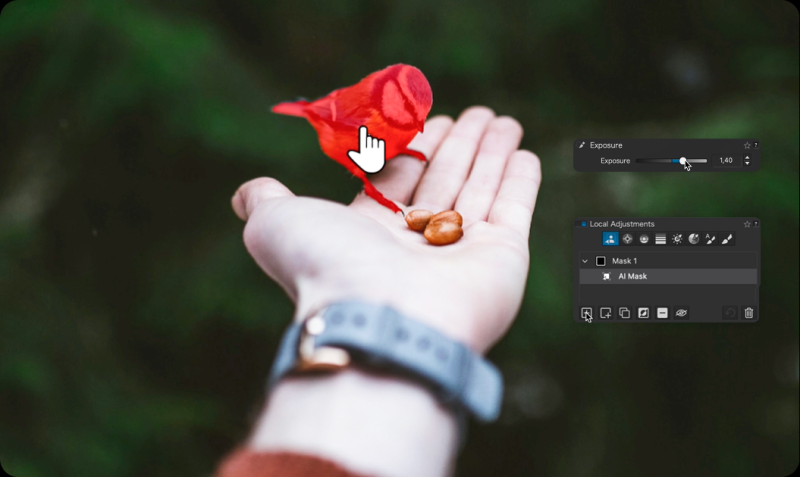
The list of predefined objects offers more than just quick selection. For example, if a photographer selects “Hair” and makes some adjustments, these changes can be intelligently copied and pasted between images, or saved as a preset that is contextually aware of the selection. Complex retouching becomes faster, smarter, and effortlessly consistent.
Combining AI Masks With U Point Technology
One of the most powerful features DxO has in its software is U Point technology. It’s always been one of the best methods of selecting parts of an image, and it’s greatly improved in PhotoLab 9.
Selections can be refined using DxO’s renowned U Point™ technology: with a combination of AI Masks, Control Points, Control Lines, Graduated Filters, and the Brush tool, photographers can create highly complex masks that would otherwise be too sophisticated for even the most advanced AI. This offers a significant advantage when editing, where refining complex selections can be very time consuming.
Targeted Noise Reduction
DxO’s well-loved DeepPRIME noise reduction technologies and DxO’s exclusive Lens Sharpening Optimization can now be targeted using local adjustments.
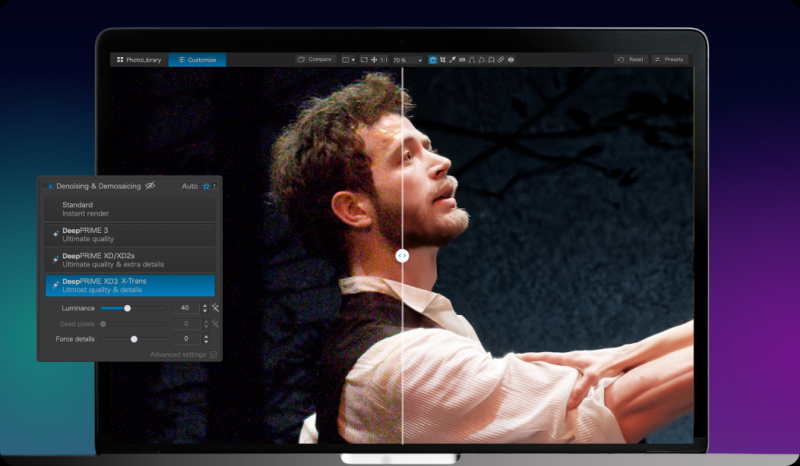
While PhotoLab’s automated processing already delivers outstanding results, this gives users the ability to fine-tune their images with a greater level of detail, especially given that the new AI Masks—combined with existing local adjustment tools—offer really fine precision.
This new version of PhotoLab also includes workflow improvements such as image stacking, a Favorites system for folders and projects, and direct access to the Project palette from Customize mode. As part of a cleaner, more versatile editing experience, you can also easily relocate folders that have been moved.
Batch Renaming
PhotoLab 9 also offers a new batch renaming tool, giving users full control over how original and processed files are named. Filenames can be automatically generated using image metadata, EXIF information, or custom text, streamlining organization and post-processing. Users can also create and save their own presets, making it easy to apply consistent naming conventions across entire projects or workflows.
Support for iPhone images
Version 9 introduces support for Apple’s iPhone image formats—HEIC/HEIF and ProRAW—making it easier than ever to edit photos taken using iOS devices. This expanded compatibility ensures a seamless workflow for photographers who want to harness the power of DxO’s image processing tools with photos captured on their iPhone.
Taking a Look at PhotoLab 9
Reviewers got a late beta of the program. I spun it up on my MacBook Pro to see how it worked.
I found the interface familiar, as I am a regular user of previous versions of PhotoLab, but regular users of other editors will spend some time scratching their heads. For example, the “File” menu has no option to save a file, unlike just about every other Windows and Mac application. To “save,” you need the Export button at the lower right of the GUI.
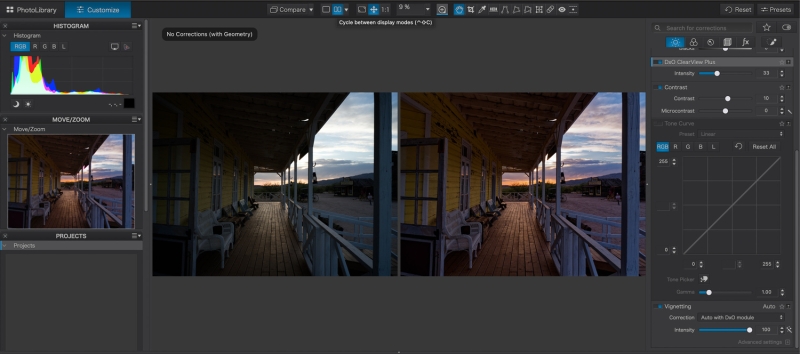
I worked on some images I had taken at the Mescal movie set near Tucson. Many westerns were shot here from the 1950s until the present day. It’s a great photo location at sunset when the set is not busy with film production. Mescal is not a well-known tourist stop but worth a visit if you are in Southern Arizona. The fact that it isn’t well known means you won’t be fighting big crowds to get your images.
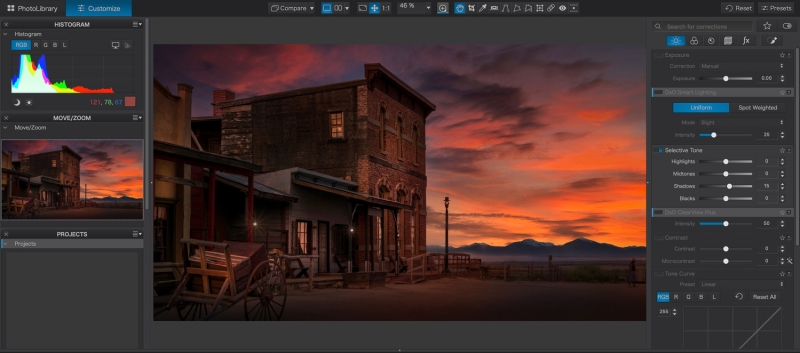
I wanted to separate some of the buildings for specific editing, and the AI mask function was excellent—it was easy to add or subtract when needed.

This kind of precision will speed up your workflow. I found it more accurate than the latest AI masking in Photoshop and Lightroom, but Adobe is rapidly improving those apps too. PhotoLab 9 did particularly well with complicated objects that other programs simply fail at.
And, using the AI masking and then adding control points if you desire is a very powerful combination.
Here’s an original unedited sunset shot at Mescal:
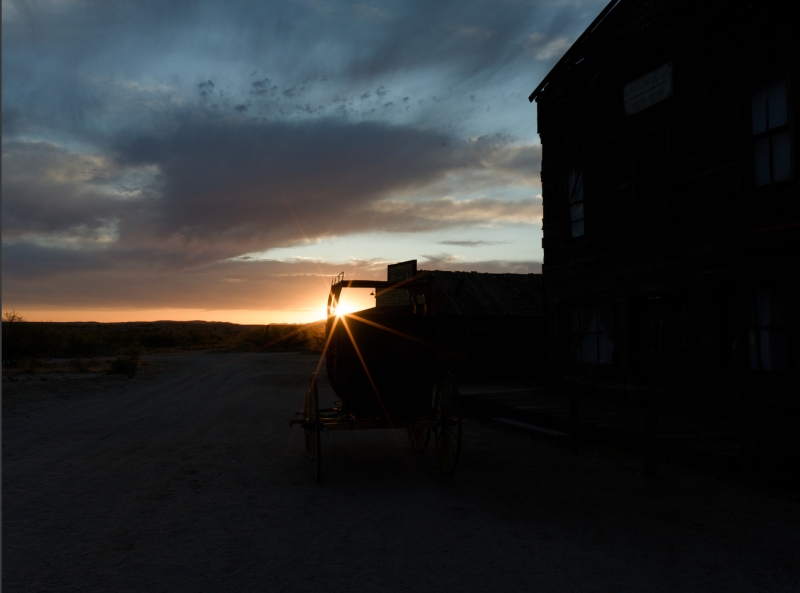
Then a very quick edit using some of the automatic lighting adjustments, selecting the buildings and the ground with AI masks, and straightening the leaning building with a couple of clicks using the geometry tools:
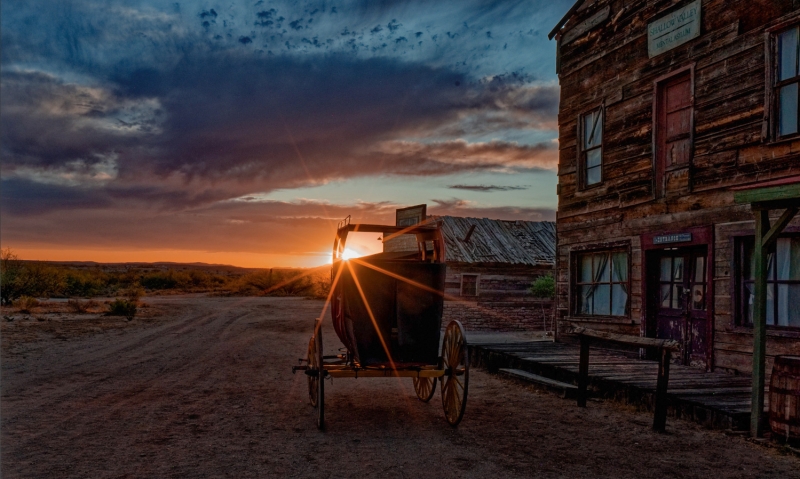
That was just a quick and dirty edit, but with a little time I could see a good image revealing itself.
Noise reduction has always been class-leading for DxO products, and I tried targeting some areas with the DxO DeepPRIME tech—it was better than my high expectations.
What I Liked
-
The software is fast and precise.
-
The new features aren’t just tacked on, but offer increased value.
-
This is not subscription software. Buy it and use it. Update if and when you want to.
-
The combination of AI masking and targeted noise reduction makes for a very powerful editing experience.
-
There are tooltips and pop-up help for every control and interface element, very valuable for new users.
What Are The Negatives?
-
This won’t be an easy transition for Adobe users. It works differently and has its own way of doing things. (I think this will pay off in better edits and increased productivity, but it’s a new software world for many.)
-
The adjustment sliders are a bit too sensitive. A very slight movement can make too big a correction.
The AI in this app is not generative AI. It won’t create a bunny in your landscape (that’s bad or good depending on your photographic philosophy).
How to Get DXO PhotoLab 9
It’s available for download today from the DxO website for macOS and Windows machines. A new license is $239.99 / €239.99 / £219.99. An upgrade from DxO PhotoLab 7 or 8 is $119.99 / €119.99 / £109.99. A 30-day trial is available here.
DxO reminds readers that the discount code “FSTOPPERS15” is still active for 15% off any software, and the end-of-summer sale “LaborDay20” offers 20% off any software from August 30–September 4. Both are valid for new customers only.
Summing Up
DxO PhotoLab keeps getting better and better. I really think I can do very high-quality editing work with this software, and version 9 is their best effort yet. Highly recommended.
